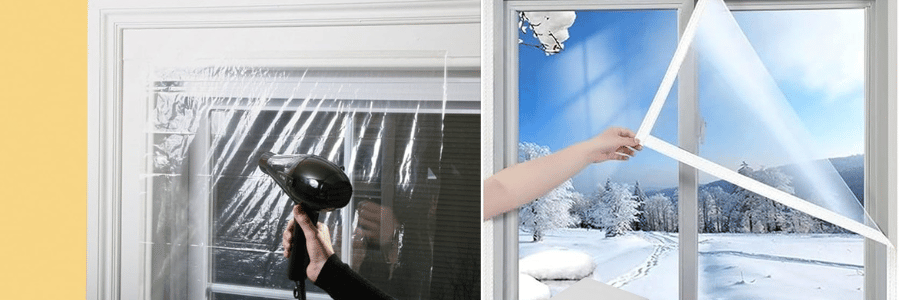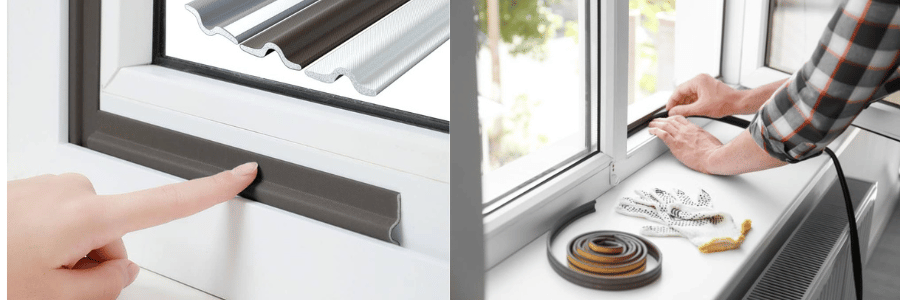When it comes to improving home energy efficiency and comfort, insulating your single glazed windows can make a significant difference. Single glazed windows, while classic in appearance, often fall short in providing adequate insulation. This can lead to increased energy costs and an uncomfortable living environment. Fortunately, there are several easy and cost-effective ways to insulate your single glazed windows. In this blog post, we will explore these methods and provide you with practical tips to enhance your home’s insulation.

Why Insulate Single Glazed Windows?
Single glazed windows consist of a single pane of glass, which offers minimal insulation compared to modern double or triple-glazed windows. This lack of insulation can lead to:
- Heat Loss: In colder months, heat easily escapes through single glazed windows, causing your heating system to work harder. This can result in higher energy bills as your home loses valuable heat that needs to be replaced to maintain a comfortable temperature.
- Heat Gain: In warmer months, single glazed windows allow heat to enter your home, making your cooling system work overtime. This not only increases your energy consumption but also makes it difficult to keep your home cool, leading to discomfort.
- Noise Pollution: Single glazed windows do little to block external noise, which can be disruptive. Whether it’s traffic, neighbors, or other outdoor sounds, the lack of insulation can make it hard to enjoy a peaceful indoor environment.
- Condensation: The temperature difference between the inside and outside can cause condensation on single glazed windows, leading to potential mold growth. This not only affects the appearance of your windows but can also create health risks and damage window frames and walls.
By insulating your single glazed windows, you can reduce these issues and create a more energy-efficient and comfortable living space. Improved insulation means better temperature regulation, lower energy bills, reduced noise, and fewer condensation problems.
Easy Insulation Methods
Window Film
- How It Works: Window film is a thin layer of plastic applied directly to the glass. It adds an extra barrier that reduces heat transfer. This barrier helps to keep heat inside during winter and outside during summer, making your home more energy-efficient.
- Installation: Clean the window thoroughly, cut the film to size, and use double-sided tape to adhere it to the window. Use a hairdryer to shrink the film for a smooth finish. The shrinking process removes wrinkles and ensures a tight fit, enhancing the film’s insulating properties.
- Benefits: Affordable, easy to install, and effective in reducing heat loss and gain. Window film is a quick solution that can make a noticeable difference in your home’s insulation without requiring professional help.

Thermal Curtains or Blinds
- How They Work: Thermal curtains and blinds have insulating properties that help retain heat during winter and block heat during summer. They are made from materials designed to provide an extra layer of insulation, keeping your indoor temperature more stable.
- Installation: Install a curtain rod or blind mechanism above the window and hang the thermal curtains or blinds. Ensure they cover the entire window area for maximum insulation effect.
- Benefits: Provides additional insulation, easy to open and close, and available in various styles and colors to match your décor. Thermal curtains and blinds also add a decorative element to your home while enhancing comfort.

Draft Excluders and Weatherstripping
- How They Work: Draft excluders and weatherstripping seal gaps around the window frame to prevent drafts and heat loss. These products create a barrier that stops air from leaking in or out, improving insulation.
- Installation: Measure the window frame, cut the weatherstripping to size, and adhere it around the edges. For draft excluders, place them along the bottom of the window. Proper installation ensures a tight seal that blocks drafts.
- Benefits: Simple to install, inexpensive, and effective in reducing drafts and improving insulation. These products are a quick and affordable way to enhance your home’s energy efficiency.
Window Insulation Kits
- How They Work: Window insulation kits typically include plastic shrink film and double-sided tape to create an insulating barrier. The film adds a layer of protection that reduces heat transfer and drafts.
- Installation: Follow the instructions provided with the kit. Generally, you apply the tape around the window frame, attach the plastic film, and use a hairdryer to shrink the film for a tight fit. This process is straightforward and can be done by anyone.
- Benefits: Convenient, affordable, and significantly improves window insulation. Insulation kits are an excellent option for those looking for a DIY solution to enhance their window insulation.

Caulking and Sealant
- How It Works: Caulking and sealant fill gaps and cracks around the window frame to prevent air leaks. These products create a durable, long-lasting seal that blocks drafts and improves insulation.
- Installation: Clean the area around the window frame, apply the caulk or sealant with a caulking gun, and smooth it out with a caulking tool or your finger. Ensure all gaps and cracks are filled for maximum effectiveness.
- Benefits: Long-lasting solution, effective in sealing gaps, and improves energy efficiency. Caulking and sealant are a one-time investment that can significantly enhance your home’s insulation.

Final Thoughts
Insulating your single glazed windows is an easy and effective way to improve your home’s energy efficiency, reduce noise pollution, and enhance overall comfort. By using window film, thermal curtains, draft excluders, window insulation kits, and caulking, you can significantly reduce heat loss and gain, leading to lower energy bills and a more comfortable living environment. Seal the deal today and start enjoying the benefits of better-insulated windows!


